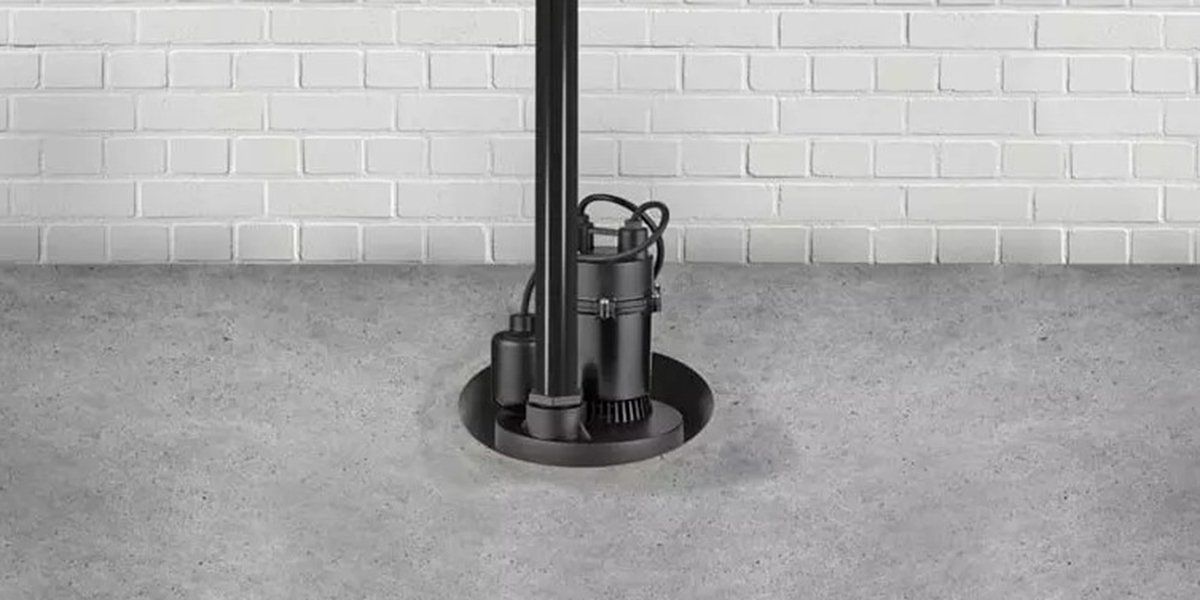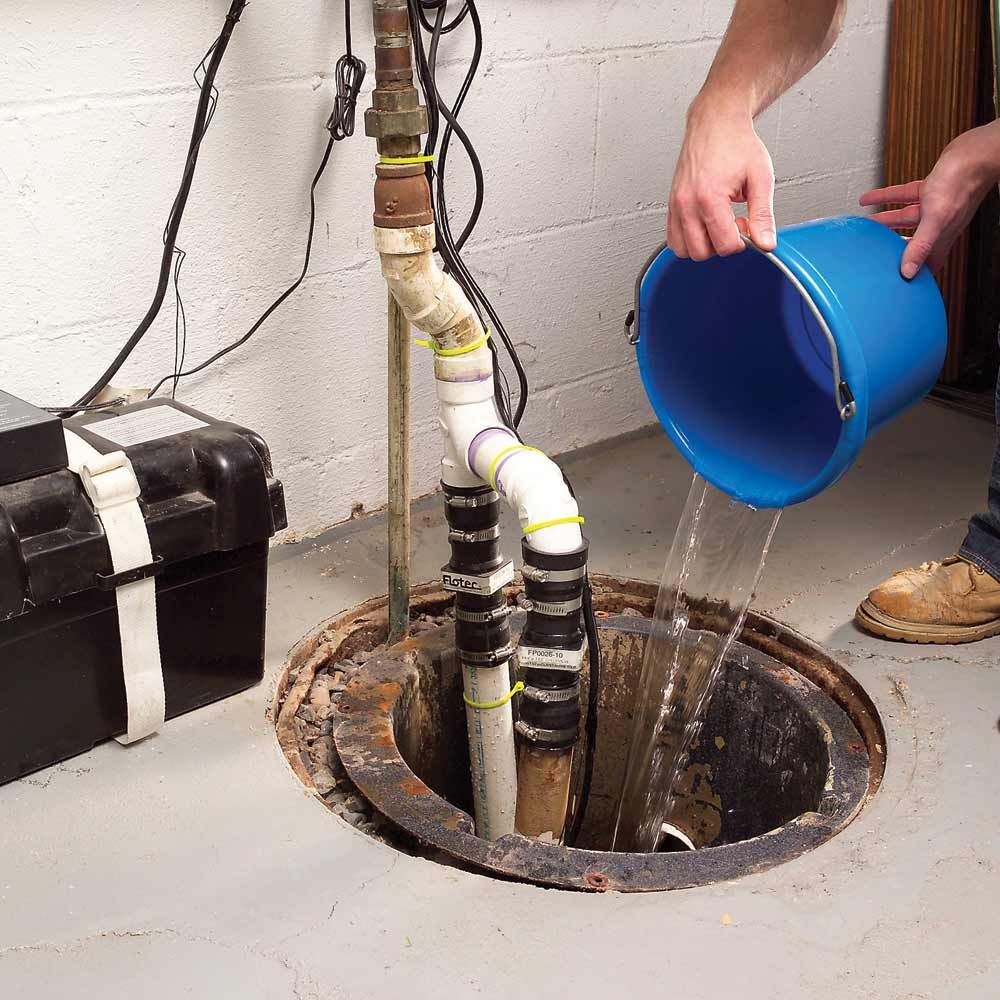Easy Methods to Clean a Sump Pump
Easy Methods to Clean a Sump Pump
Blog Article
The article directly below in relation to Cleaning & Maintenance Tips for Your Home's Sump Pump is relatively attention-grabbing. Read on and draw your own findings.

Sump pumps are important components in lots of homes, especially in locations prone to flooding or excessive moisture. They assist protect against water damage by effectively removing excess water from basements or crawl spaces. Nevertheless, like any other appliance, sump pumps need regular maintenance to ensure they operate successfully when required the most. Cleaning your sump pump is an essential part of its upkeep, and recognizing just how to do it properly can conserve you from expensive repair services and potential catastrophes.
Intro
Maintaining a tidy sump pump is vital for its correct performance and longevity. Neglecting this necessary job can result in clogs, malfunctions, and ultimately, water damages to your property. As a result, finding out how to clean a sump pump is essential for house owners that rely upon these tools to keep their cellars dry and safeguarded.
Indications of a Dirty Sump Pump
Recognizing when your sump pump requires cleaning is crucial for stopping possible breakdowns. Some common indicators that suggest an unclean sump pump include unusual noises throughout procedure, lowered water circulation, and visible debris in the pit. If you observe any one of these signs and symptoms, it's vital to cleanse your sump pump immediately to avoid any kind of more concerns.
Getting ready for Cleaning
Before you begin cleaning your sump pump, it's necessary to take some safety precautions. Beginning by turning off the power to the pump to prevent any electrical accidents. In addition, use ideal safety gear, such as gloves and safety glasses, to protect on your own from dust, particles, and potential microorganisms.
Understanding the Sump Pump
Before diving into the cleansing process, it's vital to have a standard understanding of how a sump pump functions. Generally set up in a pit or container listed below the basement floor, a sump pump consists of a number of crucial parts, consisting of a pump, a float switch, and a discharge pipeline. When water accumulates in the pit, the float button triggers the pump, which after that pumps the water out via the discharge pipeline, far from the building's structure.
Detailed Guide to Cleaning a Sump Pump
Turning off the Power
Begin by disconnecting the power supply to the sump pump to prevent any accidents while cleansing.
Looking For Correct Functioning
Before reinstalling the pump, perform a fast test to make sure that the float switch triggers the pump appropriately. Pour some water right into the sump pit and observe the pump's procedure. If whatever is functioning appropriately, you can reconstruct the pump and reconnect the power supply.
Getting Rid Of Particles and Dirt
Use a bucket or a scoop to get rid of any visible debris, dust, or sediment from the sump pit. Dispose of the debris correctly to avoid it from obstructing the pump or the discharge pipeline.
Cleansing the Pump and Drift Change
When the pit is free from debris, meticulously remove the pump from the pit. Inspect the pump and the float switch for any signs of damages or wear. Use a soft brush or cloth to clean up the surface areas and remove any kind of accumulated gunk.
Purging the System
After cleaning the pump and float switch, purge the sump pit with tidy water to get rid of any type of remaining dust or debris. This will help guarantee that the pump operates efficiently and successfully.
Upkeep Tips to Keep Your Sump Pump Clean
Along with routine cleaning, there are several upkeep suggestions you can comply with to keep your sump pump in ideal condition:
Verdict
Cleansing your sump pump is an essential element of its upkeep and makes certain that it runs effectively when you need it one of the most. By adhering to the actions outlined in this overview and including normal maintenance right into your routine, you can expand the life expectancy of your sump pump and shield your home from water damage.
6 STEPS ON HOW TO CLEAN A SUMP PUMP PROPERLY
UNDERSTANDING SUMP PUMPS
Your sump pump plays a crucial role in protecting your home by managing and removing excess water. It primarily functions as a “shield”, guarding your basement against the damaging effects of water accumulation. The pump is housed in a sump pit in the lowest part of your basement, and its job is to pump out any water that collects there.
During heavy rainfalls or when snow melts rapidly, water can infiltrate your basement, posing potential risks like flooding, structural damage, and harmful mold growth. Here, the sump pump springs into action, pumping out the intruding water and directing it away from your home.
SAFETY FIRST
Before cleaning, remember to prioritize safety. Disconnect the sump pump from the power source to prevent any accidental electric shocks. Also, wear sturdy gloves to protect your hands from any sharp or dirty components within the pump.
REMOVE THE SUMP PUMP
After ensuring your safety, the next step is to remove the sump pump from its pit. Doing this might require careful maneuvering as you don’t want to damage any pump components. Once removed, clean the sump pit to remove any accumulated debris or sludge.
INSPECT THE PUMP
Inspect the pump for any visible signs of wear or damage. Check the power cord, float switch, and impeller housing. If any components look worn out or damaged, consider replacing them to ensure optimal performance.
CLEAN THE PUMP
Thoroughly clean the pump with warm, soapy water. Make sure to rid it of any dirt, gravel, or other debris that might impede its performance. You can use a toothbrush to clean the small, hard-to-reach parts of the pump.
REINSTALL THE SUMP PUMP
Reinstall the pump into the sump pit Make sure it’s positioned correctly to remove the water effectively Once it’s back in place, reconnect it to the power source TEST THE PUMP
Finally, pour some water into the pit to ensure the pump works correctly. It should start automatically and begin pumping out the water; if it doesn’t, check the power source and the positioning of the pump.
Remember, while cleaning your sump pump is an essential part of home maintenance, hiring a professional plumber for a thorough inspection and cleaning at least once a year is also important. This will ensure that your pump is in optimal condition, ready to protect your home from potential water damage.
BEST PRACTICES FOR CLEANING SUMP PUMP DISCHARGE PIPES
Regular Inspection: Regularly inspect your discharge pipes, especially during heavy rainfall or snowmelt periods. Look for any signs of blockage or damage. Early detection of problems can prevent serious issues down the line. Periodic Cleaning: Over time, sediment and debris can accumulate in the discharge pipes, impeding the flow of water. Regular cleaning helps keep the pipes clear and functioning efficiently. You can use a high-pressure water jet to effectively clean the pipes. Insulation During Winter: In colder climates, discharge pipes can freeze, blocking the outflow of water. Protect your discharge pipes from freezing temperatures by insulating them with foam pipe insulation. This will ensure the sump pump can continue to discharge water even in freezing conditions. Proper Positioning: The discharge pipe should be positioned to direct water away from your home’s foundation. Improper positioning can lead to water seeping back into the basement. Ensure the pipe is long enough and angled correctly. Installation of a Check Valve: A check valve prevents water from flowing back into your sump pit after the pump has pushed it out. Installing a check valve helps maintain the efficiency of your sump pump and reduces the risk of flooding. Minimize Pipe Turns: Every curve or turn in the discharge pipe can decrease the efficiency of water flow. By minimizing turns and bends in your discharge pipe, you can increase the efficiency of your sump pump. https://www.fullspeedplumbing.com/how-to-clean-a-sump-pump-properly9999/

We had been guided to that write-up about How to Care for Your Sump Pump from an acquaintance on a different web property. Are you aware of anybody else who is looking into the subject? Why not share it. We love your readership.
Call Today Report this page